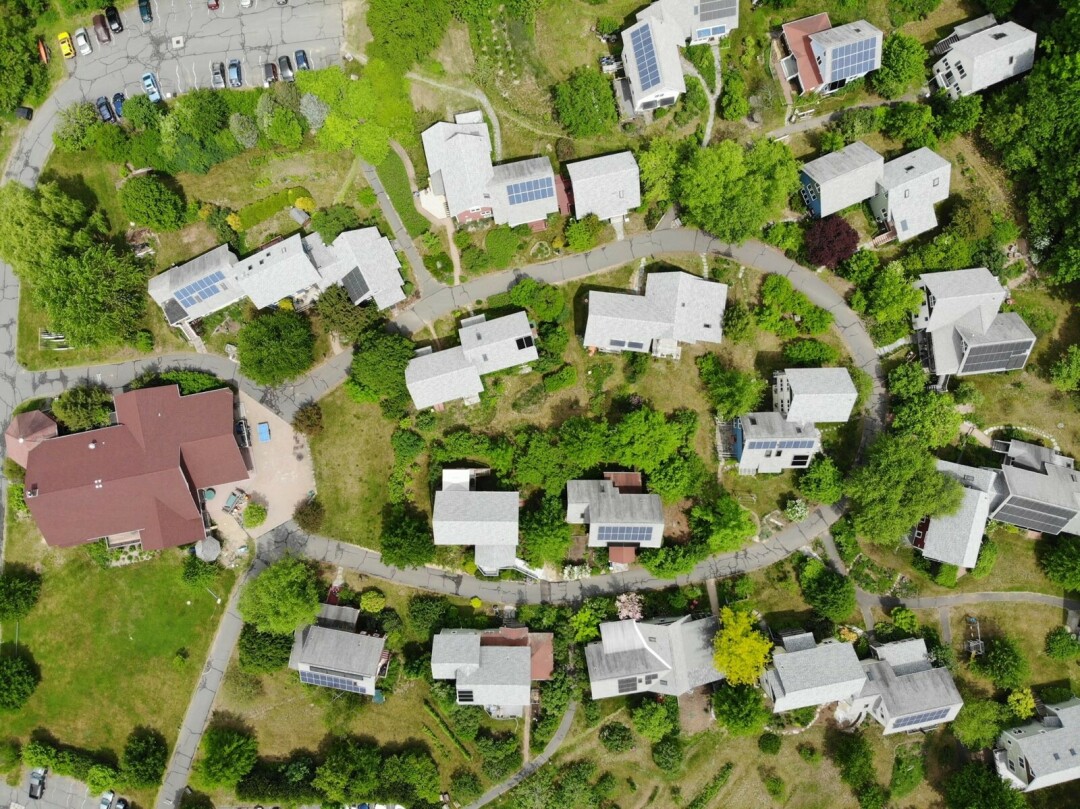Cohousing is a return to village living

Housing in the Duluth area is a hot topic right now. New developments still practice the old ways of creating housing.
But there is another option – a model that provides right-sized living, social interaction among supportive neighbors, security and safety, sustainability, and cost efficiency. It is an option with a proven track record in the United States, including Minnesota.
What is cohousing?
Cohousing is a community of private units, lots of common spaces, especially places on the property where people can gather, collaborative governance (decision-making models replacing majority vote), self-management and private incomes.
Created in the 1970s in Denmark, in more than five decades it has become a well-established housing option (rental, cooperative, ownership):
In the late 1980s Danish seniors began a movement to replace old-age warehousing with peer group cohousing.
Cohousing was brought to North America in 1988 by architects Charles Durrett and Kathryn McCamant, who spent more than a year studying Danish cohousing. Since then, more than 150 communities have been established in the U.S. and more are being proposed.
A key space on the property is called the Common House. The square footage, which usually includes rooms for dining and community meetings, kitchen, laundry, group activity and guests, is the reason that private units can be small.
In creating a cohousing community, future residents participate in the site selection and design process.
Cohousing communities are described as villages or neighborhoods with about 20-50 homes usually clustered near the common house with connecting pathways. There are a variety of building types, styles, and locations. Residents have frequent common meals (cooked by community members) and stimulating activities together. Households have private autonomy with the positives of social bonding and sharing of resources.
There are two types of cohousing demographics: multigenerational and senior. This communitarian way of living creates an environment for defeating loneliness and isolation for all participants.
For those more than 50 years old, the cohousing model affords additional attractions.
• Living with peers for happy and healthy aging.
• Promoting new learning and interests with peers.
• Aging in place surrounded by supportive neighbors who can choose to help with tasks like shopping, pet care, and appointments.
• Sharing aging issues.
• Access-friendly design of common house, grounds, and private units that is adaptable for aging residents.
• A setting where residents do what they can to care for each other - the co-care principle.
• A community that plans for aging, including accommodation for professional help with activities for daily living.
• Private homes that are the right size.
• Reduced impact on the planet by using less land and incorporating sustainability practices as cooperative actions.
• Common meals and activities that grow social bonds and provide reasons to get out of homes to defeat loneliness and isolation.
• Cooperative and collaborative governance where all voices contribute to decisions and community management.
• Lower costs by sharing resources and living in smaller, low maintenance homes.
Interested?
There are multiple, free/low cost, and convenient ways to learn more.
Short Courses: Cohousing 101 is for anyone with a general interest in cohousing.
50+Cohousing is for seniors, people planning retirement, and children with 50+parents.
Both courses are offered through Duluth Community Education in two formats, in-person and recorded webinar.
The online catalog and registration information can be found here or call 218 336-8760.
Social Media: Cohousing for the Northland is a Meetup group which is a source of learning and discussion of cohousing, in general, and as it applies to the Duluth area. The Meetup platform is used for scheduling events for the Cohousing for the Northland group. There is no fee to join.
A Facebook page with the same title can be found here.
Lee A. Pedersen moved to Duluth in 2014 to retire from being a librarian at Brown University. Looking for an alternative to assisted living, home care, nursing home living, she has researched and studied cohousing since 2018, including attending national conferences, visiting communities, reading the cohousing literature, talking to experts, and learning from virtual events. Her dream is to establish a cohousing community in Duluth. She can be reached at cohonorth@gmail.com.